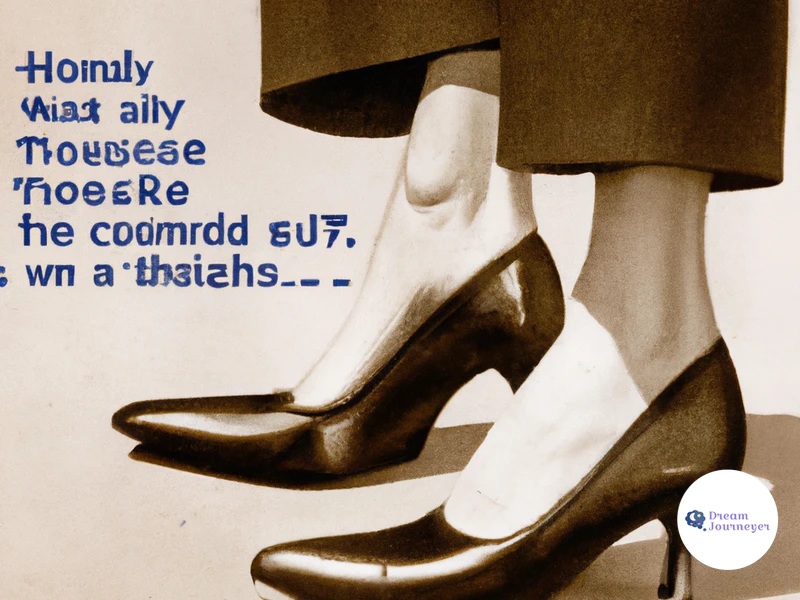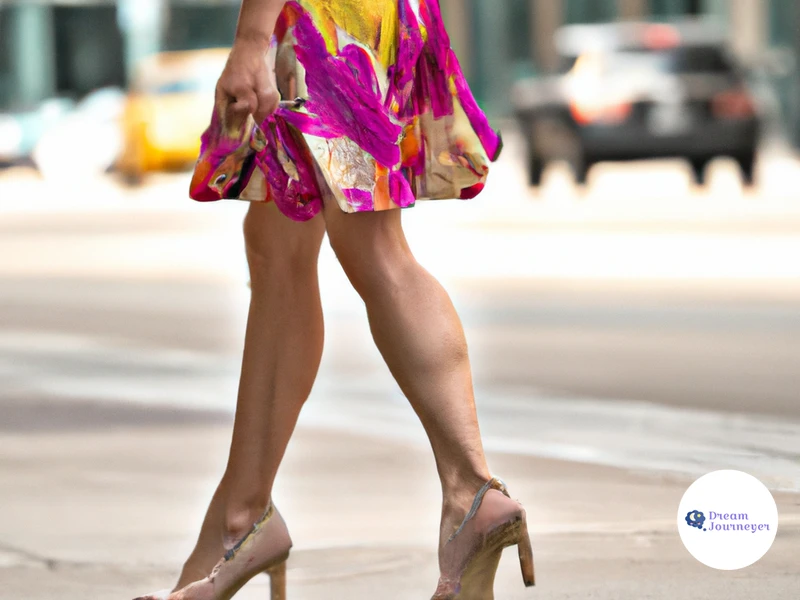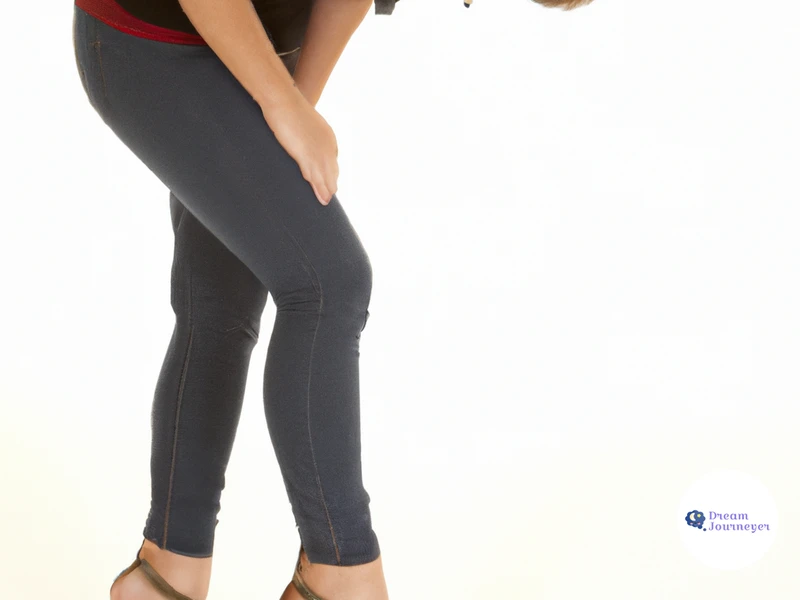Are you dreaming of wearing heels but don’t know how to make them comfortable? Wearing high heels can be a daunting task, especially if you are not used to wearing them. Fortunately, with a few tips and tricks, you can make high heel wear comfortable and enjoyable. In this article, we will provide you with tips and tricks to make high heel wear comfortable and enjoyable. So read on and start dreaming of wearing heels with confidence and ease.
What Are High Heels?

High heels are shoes with a thick sole and a heel that is higher than the toes. They are typically made of leather, synthetic materials, or canvas and range in height from 2 to 6 inches. High heels come in a variety of styles, from pumps and stilettos to wedges, sandals, and boots.
| Style | Heel Height |
|---|---|
| Pumps | 2-3 inches |
| Stilettos | 3-4 inches |
| Wedges | 3-4 inches |
| Sandals | 3-4 inches |
| Boots | 4-6 inches |
Benefits of Wearing High Heels
Appearance: High heels instantly add an elegant, sophisticated and polished look to your outfit. Whether you’re attending a formal event or just dressing up for a night out, high heels can instantly elevate your style.
Confidence: Wearing high heels can give you an extra boost of confidence. Not only will you look fabulous, but you’ll stand taller and feel more empowered.
Posture: High heels can help you stand up straighter and maintain better posture. This can help make you look taller, thinner and more confident.
Legs: High heels can make your legs look longer and leaner. The extra height also gives your calves a firmer appearance.
Calf Muscles: Wearing high heels can help strengthen and tone your calf muscles. This is because you need to use extra muscles to balance when wearing high heels.
Gait: High heels can give you a more graceful gait. Your stride will become more feminine and elegant.
Common Discomfort with High Heel Wear

- Blisters: Blisters form when the skin rubs against the shoe, and can make walking in heels uncomfortable.
- Corns: Corns are caused by irritation from the shoe, and are painful in high heels.
- Bunions: Bunions are caused by the misalignment of the big toe, and can be aggravated when wearing high heels.
- Aching Feet: High heels are often pointed, which can cause the toes to ache after extended periods of wear.
- Back Pain: High heels can cause strain on the back, leading to back pain.
How To Break In Your High Heels
Start With Shorter Walks: Before wearing your heels for a long day, begin by taking short walks around your house or in a safe area outside. Start with five minutes and gradually increase the time. Doing this will help build up your muscles and get your feet used to wearing heels.
Stuff Your Shoes: If your shoes are too tight, you can stuff them with cotton balls or tissue paper. This will help stretch the shoe slightly, making it more comfortable to wear.
Stretch Your Heels: Use a shoe stretcher to stretch your shoes and make them more comfortable. You can use a shoe stretcher to lengthen the length of the shoe and/or the width.
Wear Heels Around The House: Wear your heels at home to get used to the feel of them. This will help you build up your confidence and get comfortable with the heeled look.
Pamper Your Feet: Use a foot cream or lotion to keep your feet moisturized and prevent blisters. Use a foot scrub to get rid of any dry skin. Give yourself a foot massage to relax your muscles and make them more flexible.
Wear Heels With Thick Socks: Wear socks or stockings with your heels to make them more comfortable. The extra layer of fabric will prevent blisters and keep your feet warm.
Spray Your Shoes: Use a leather or suede protectant spray to protect your shoes from dirt and water. This will also help make your shoes more flexible and easier to break in.
Lastly, Wear Your Heels: Wear your heels around the house and gradually increase the time you spend in them. Once you feel comfortable, start wearing them out in public. With these tips, you’ll be strutting your stuff in no time!
How To Choose The Right High Heels

- Consider Your Activities: High heels can be ideal for special occasions, but if you are going to be doing a lot of walking, dancing or standing, opt for lower heels or a more supportive shoe.
- Try Them On: Make sure to try on any high heel you are considering buying to ensure they are comfortable.
- Choose Quality Materials: Look for shoes made of quality leathers and supportive cushioning.
- Heel Size Matters: Opt for heels that are no more than 2-3 inches tall.
- Test for Comfort: When trying on potential purchases, walk around the store and make sure they feel comfortable.
- Look for Supportive Features: Look for features such as ankle straps and padded insoles to provide extra support.
- Be Willing to Invest: Quality shoes can be expensive, but investing in higher quality materials will make your shoes more comfortable and last longer.
How To Prepare For High Heel Wear
- Choose the Right Heel Height: Beginners should start with shorter heels, such as kitten heels, before moving to higher heels. Try on different heights to get a better understanding of what you can handle.
- Break In Your Shoes: Blisters and bruises are never fun. To avoid this, break in your shoes before wearing them out. Wear them around the house and walk on a soft surface to get used to the feel.
- Wear the Right Socks: Invest in a good pair of socks that won’t slip and slide. Make sure they are comfortable and won’t constrict your feet.
- Focus on Your Posture: Stand up straight and keep your shoulders back when wearing high heels. This will help you avoid pain and discomfort.
- Strengthen Your Feet: Regular exercise can help strengthen your feet and ankles, making them better equipped to handle the stress of wearing heels.
- Bring Extra Shoes: Have a spare pair of flats to slip on when your feet start to hurt. This will give you a break without having to take off your heels completely.
Tips For Making High Heel Wear Comfortable

Buy the Right Size: Ensure that the shoes you buy fit your feet perfectly. If they are too small, wearing them will be very uncomfortable. You can also try buying half a size bigger to allow for some extra room.
Check the Heel Height: When shopping for high heels, look for shoes with shorter, wider heels. They are more comfortable than thinner, taller heels.
Break in Your Shoes: Once you have purchased the shoes, wear them around the house for a few hours to break them in. This will help you get used to them and make them more comfortable.
Choose the Right Insoles: Invest in good quality insoles that are designed for high heel shoes. This will help cushion your feet and prevent blisters.
Wear Heel Grips: Heel grips are useful for keeping your feet in place. These can be placed at the back of the shoe to help reduce slipping and rubbing.
Choose the Right Material: Look for shoes made of soft, flexible materials that will mold to the shape of your feet. This will make them more comfortable.
Walk Slowly: Take your time when walking in high heels. Try to avoid walking too fast as this can cause your feet to slip and increase the risk of falling.
Take Breaks: If you are going to be wearing your high heels for a long period of time, make sure to take regular breaks. This will help prevent your feet from becoming sore.
Stretch Your Feet: Stretching your feet every day can help make your high heel wear more comfortable. Try stretching your toes and ankles for a few minutes each day.
Avoid Pointy Toes: Try to avoid buying shoes with a pointed toe as this can be very uncomfortable. Instead, look for shoes with a rounded or squared toe.
Keep Heel Guards Handy: Heel guards can help protect your feet from blisters. Keep a pair of heel guards handy when wearing your high heels.
Wear Socks: Wearing socks can help reduce friction and blisters. Choose a thin pair of socks or stockings that won’t show through your shoes.
How To Get Used To Wearing High Heels
| Tips | Tricks |
|---|---|
| Start off with a two to two and a half inch heel, and gradually work your way up. | Practice walking around your house in your heels before venturing outside. |
| Wear your heels for short amounts of time. | Wear socks with your heels to help keep them from slipping off. |
| Make sure the heels fit properly and are not too tight. | Look for shoes with thicker heels and platforms for extra support. |
| Take small steps, and keep your toes pointed forward. | Choose a pair of ”comfy” heels with extra cushioning. |
| Wear your heels with a heel grip for extra support. | Find a shoe with an ankle strap for added stability. |
When it comes to wearing high heels, practice makes perfect. Start off with a two to two and a half inch heel, and gradually work your way up. Practice walking around your house in your heels before venturing outside. Wear your heels for short amounts of time and make sure they fit properly and are not too tight. Take small steps, and keep your toes pointed forward. Look for shoes with thicker heels and platforms for extra support. Choose a pair of ”comfy” heels with extra cushioning, wear them with a heel grip for extra support, and if possible, find a shoe with an ankle strap for added stability. Wearing socks with your heels can also help keep them from slipping off. With time and practice, you’ll be strutting around in your heels in no time.
Frequently Asked Questions
How can I make walking in heels more comfortable?
- Choose the Right Heel Height: Opt for a heel height that is comfortable for you. Too high a heel will make your feet hurt quickly. Start with a low or mid-height heel, and work your way up.
- Stretch Your Feet: Before putting on your heels, stretch your feet using simple exercises. This will help you become more accustomed to being in high heels.
- Choose the Right Fit: Make sure your heels fit well. Poorly fitting heels can cause blisters and pain.
- Arch Support: Add arch support to your heels if you feel discomfort. If you are going to be wearing heels for a long period of time, use an arch support insole.
- Take Breaks: If you are wearing heels for a long period of time, take breaks every now and then to give your feet a rest.
- Walk with Confidence: Keep your posture straight and walk with confidence. This will help you maintain your balance and reduce the chances of a fall.
- Wear Heel Grips: Heel grips help keep your feet in place, reducing slipping and rubbing.
- Wear Cushions: Cushions help provide extra padding and comfort.
- Practice: Practice walking in your heels before wearing them out.
What type of heels should I choose for my first pair of high heels?
When selecting your first pair of high heels, consider a low, block heel with a wide base for stability and comfort. A classic pump is a great option for the office or a night out, and an ankle strap will help keep them secure on your feet. Aim for heels that are around 2-3 inches, to keep the pressure on the balls of your feet to a minimum. For extra cushioning, choose a pair with a padded footbed to reduce impact and ensure a comfortable fit.
What Size Should I Get For My High Heels?
Tip 1: Measure Your Feet
- Measure your feet while you are standing up.
- Measure your feet width and length at the same time.
- Measure your feet both in the morning and at night.
- Consider the size of the toes and instep.
Tip 2: The Size of the Shoes
- Subtract 1/2 inch from the length of your foot.
- Choose a shoe with a width that is the same as your foot.
- Choose a shoe that is 1/2 inch longer than your foot.
- Buy shoes that have an adjustable strap to help with the fit.
Tip 3: Test the Fit
- Test the fit of the shoes by walking around in them.
- Check for any rubbing or pinching in the heel or toe area.
- Make sure the heel does not slip up and down.
- Make sure the shoe is comfortable and not too tight.
How can I protect my feet and ankles when wearing high heels?
Wearing high heels can put a lot of strain on your feet and ankles. To protect your feet and ankles, make sure to:
- Choose the right shoes – when buying high heels, make sure they fit properly and have adequate cushioning and arch support.
- Take breaks – take breaks in between wearing high heels throughout the day.
- Stretch – take time to stretch your feet, ankles and calves before and after wearing high heels.
- Strengthen – incorporate exercises that strengthen your feet, ankles and calves into your routine.
What Tips Can I Use to Make Sure My High Heels Fit Properly?
- Make sure you know your size: Measure your foot at the end of the day when your feet are the largest, and use this size to determine the size of your heels.
- Choose the right width: Your heel should fit snugly against your foot without being too tight or too loose.
- Try on your shoes: Always try on high heels before purchasing them to ensure they fit properly and are comfortable.
- Check the arch support: Make sure the arch of your foot is supported by the heel to avoid pain and discomfort.
- Wear the correct socks: Wear thin, non-cushioned socks to ensure a proper fit.
- Walk around in them: Before purchasing, walk around in the shoes to check for any discomfort.
Conclusion
High heel wear can be comfortable and fashionable. With the right size, design, and fit, you can enjoy the look and feel of wearing high heels without any discomfort. Regular practice, proper cushioning, and adequate rest will also help you to feel comfortable and confident when wearing high heels.
Remember that when it comes to high heels, comfort is key and practice makes perfect. With the right tips and tricks, you can look and feel your best in a pair of high heels!
References
- Podiatry Arena. (2019, November 11). High Heel Shoes and Foot Pain: A Systematic Review. Retrieved from https://pubmed.ncbi.nlm.nih.gov/31695331/
- Barczyk, J., Jaskulska, M., & Maćkowiak, P. (2017, June 19). High-heeled shoes—benefits and harms for the human body. Retrieved from https://www.ncbi.nlm.nih.gov/pmc/articles/PMC5205706/
- The Nutrition Source. (2020, June 24). Calories & Calories from Fat. Retrieved from https://www.hsph.harvard.edu/nutritionsource/healthy-weight/weight-loss-basics/calories-basics/






